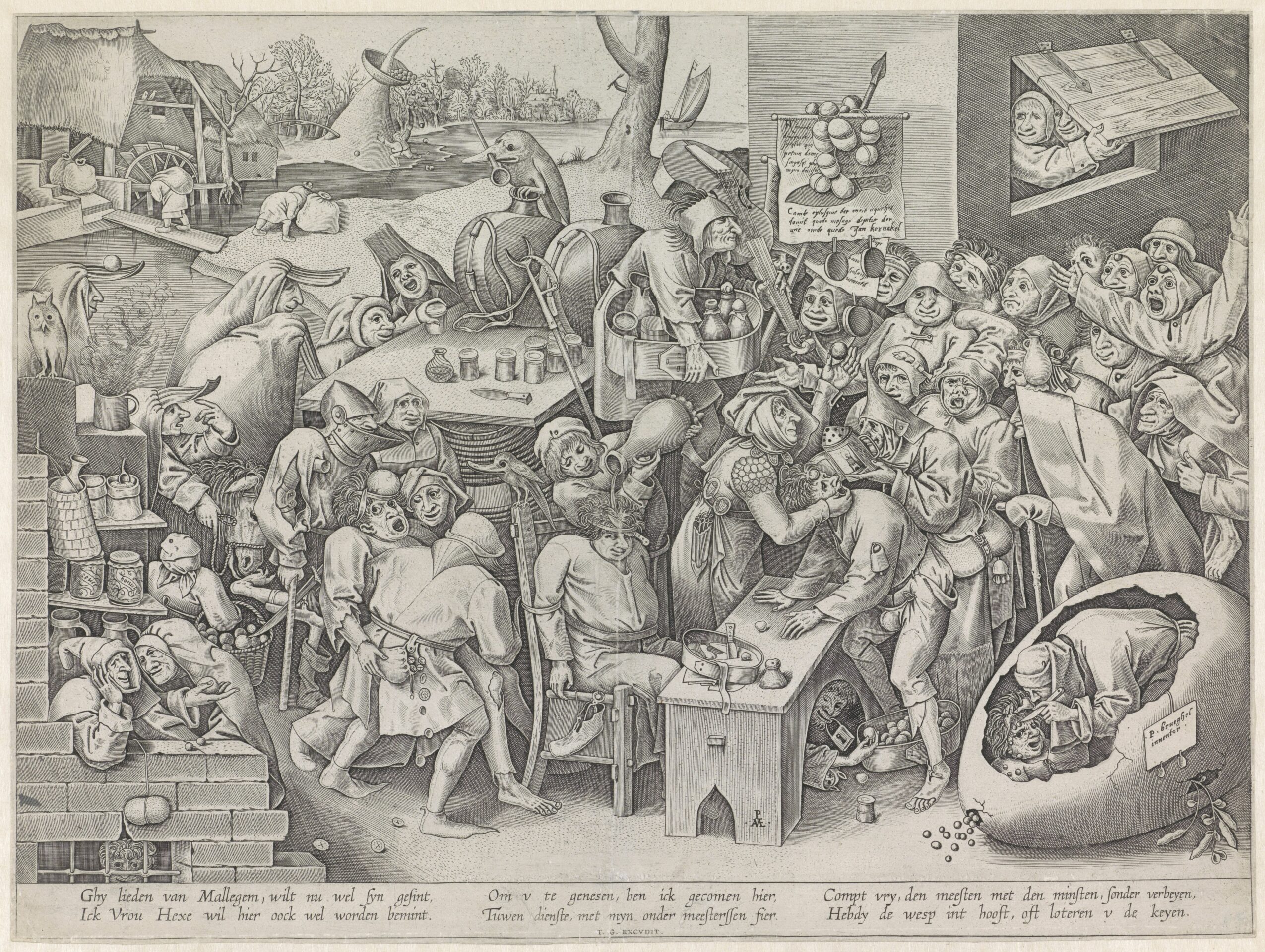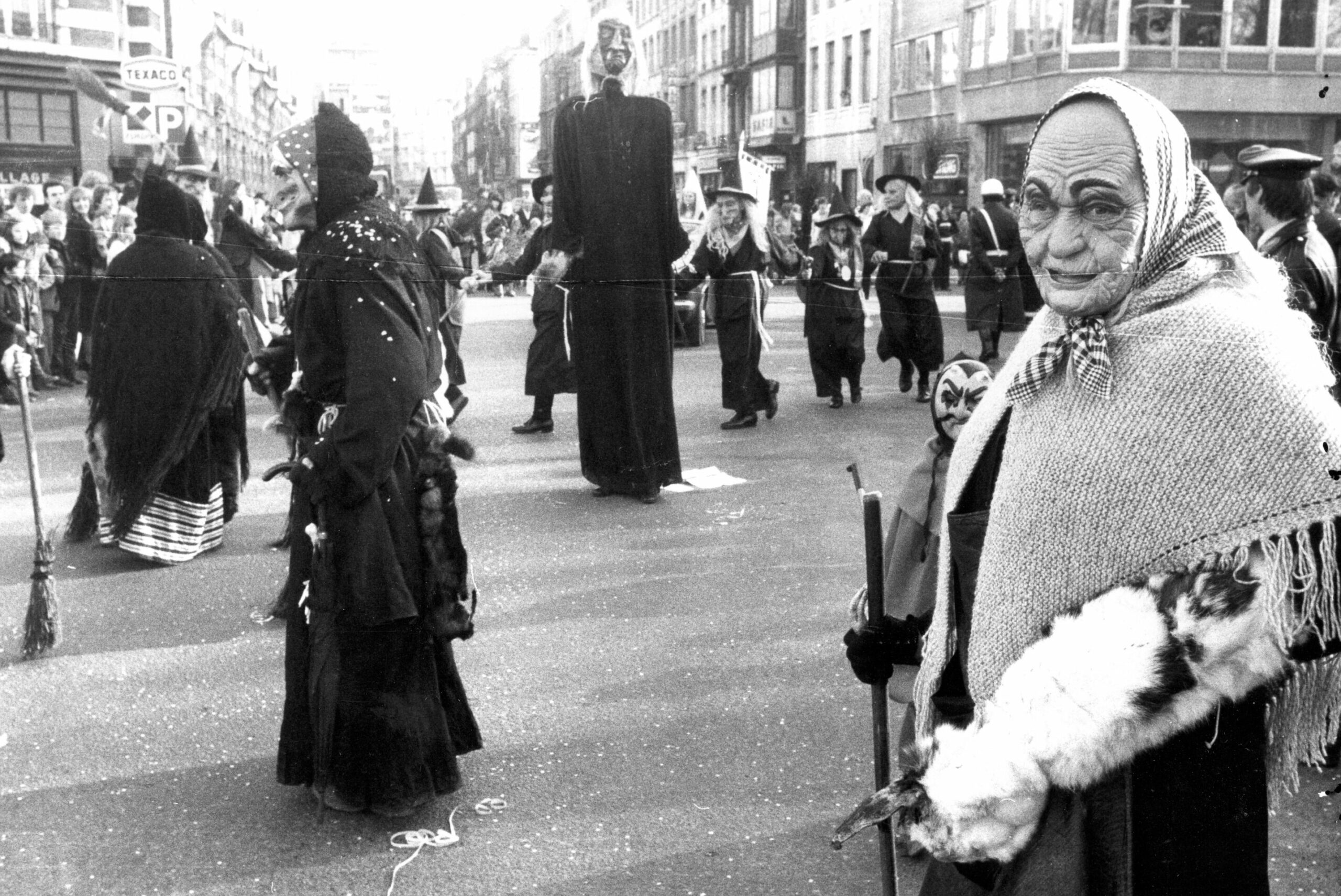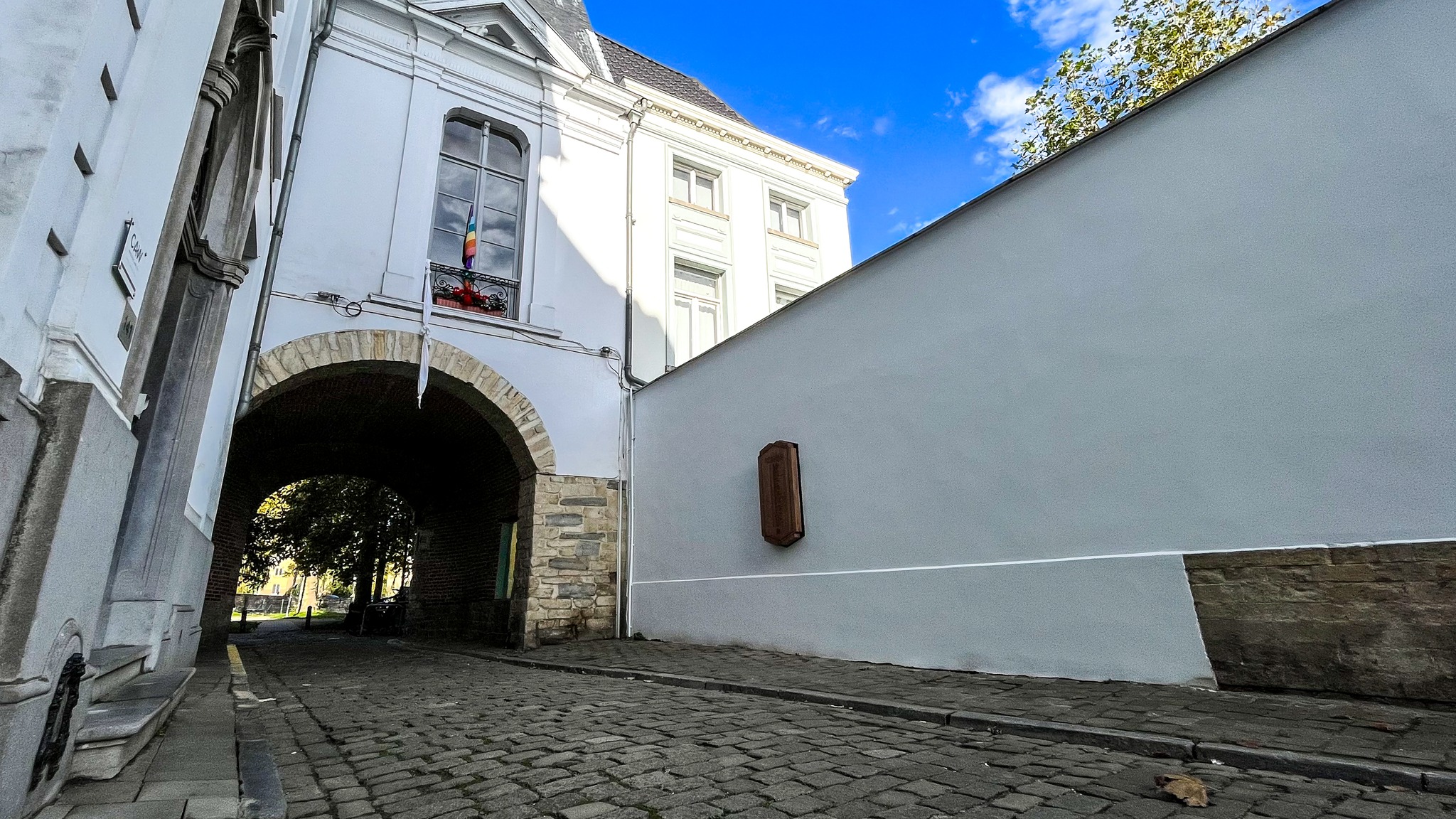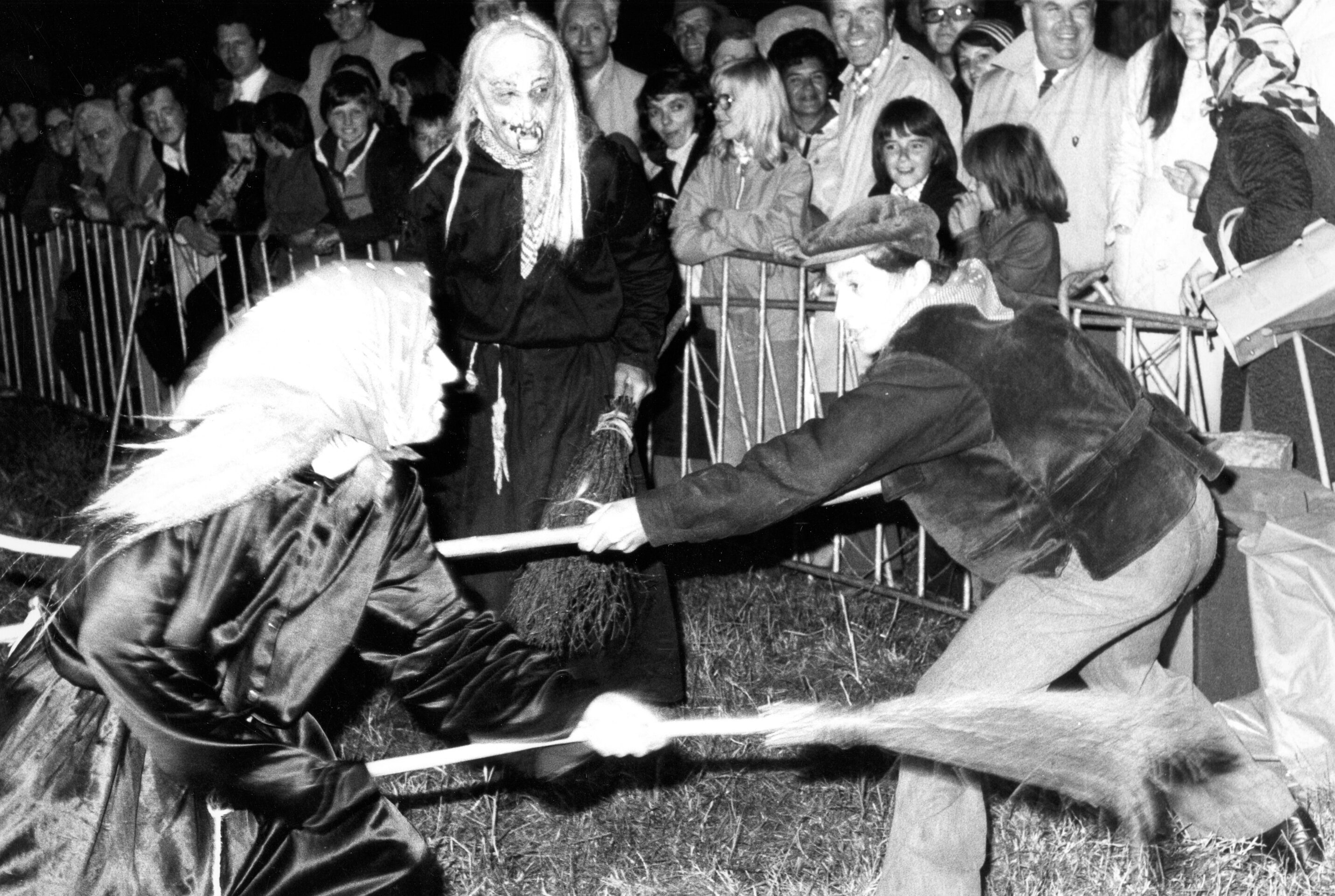For many people, the term 'witch' conjures up the image of a hunchbacked, wart-nosed old woman casting spells over her bubbling cauldron, or flying overhead on a broomstick – an image first said to have been created by Belgian artist Pieter Bruegel.
Or perhaps folk tales come to mind – like the legend that links Brussels' famous Mannekin Pis to a witch's curse on an unlucky young boy who relieved himself on her front door.
But centuries ago in Belgium, just like across the rest of Europe, 'witch' was shorthand for a troublesome woman who didn't fit society's mould – the punishment for which was often brutal and deadly.
Historians estimate that between 35,000 and 60,000 people were executed during witch-hunts across Europe between around 1450 and 1750. Some 80% of those condemned as witches were women.
Belief in witchcraft in Europe peaked in the 16th and 17th centuries. This was a tumultuous time of war, climate change, religious conflict and famine, when people were looking for explanations, or in the case of unfortunate women accused of being witches, scapegoats.
The arrival of the printing press in the 15th century allowed ideas to spread more quickly, including texts such as the 'Malleus Maleficarum' ('Hammer of Witches') from 1486. This was a bestseller which described how witches should be identified and punished.
A bloody campaign in Belgium
In the Southern Netherlands (which spanned most of modern-day Belgium and Luxembourg, and small parts of the modern Netherlands and Germany), King Phillip II passed a witchcraft law in 1592, defining witches as the worst and most dangerous kinds of heretics.
The driving force behind the law was Flemish Jesuit and demonology expert Martin del Rio, who published a book in 1599 called 'Disquisitiones Magicae' ('Investigations into Magic'). This would become the handbook for fighting witchcraft in Flanders, as those accused were burned at the stake with increasing frequency.
Witch-hunts in the region that would become modern-day Belgium have been described as some of the most extreme and bloody in Europe.
Recent research has shown that at least 1,150 to 1,250 witches were executed in the Southern Netherlands between 1450 and 1685.
As KU Leuven Professor Dries Vanysacker writes, the year 1595 was "particularly bloody", as from June until September the Flemish-speaking part of Brabant executed 29 women and three men.
In Flanders, the first peak lasted until 1628, with at least 161 executions. Westhoek (Furnes, Nieuport, Diksmuide, Sint-Winoksbergen, Dunkirk, Hondschote, Broekburg, Cassel and Ypres) was especially prone to witches. Cities such as Bruges (in 1595) and Ghent (in 1601) also had "witch years".

Print of 'De heks van Mallegem' by Pieter van der Heyden, original design by Pieter Bruegel (I), 1595 - 1633. Credit: Rijksmuseum
Ghent
Some 60 people (44 women, 15 men and one boy) were accused of witchcraft in Ghent between 1364 and 1713, according to Historical Houses Ghent which manages a number of historical buildings across the city. Numerous victims met a gruesome end as they were burned at the stake.
Executions generally took place in Sint-Veerleplein square, alongside those found guilty of other crimes such as counterfeiting. For those accused of witchcraft in Ghent, burning at the stake was the most common execution method, due to the supposedly purifying effect of the fire.
The stories of some of these victims have survived through the centuries, and been collected by Historical Houses Ghent.
In 1603, Catherine Tancré was begging on Oudburg in Ghent. When a passing child dropped a piece of bread and refused to take it back when she picked it up, she mumbled "may the devil take you." Shortly afterwards the child happened to fall ill, and Tancré was found guilty of witchcraft and burned at the stake.
Meanwhile in 1598, Cornelia Van Beverwyck (known as 'barefoot Nele') was found guilty of having sexual intercourse with Satan in broad daylight in Ekkergem in the west of Ghent city centre. Following this, it was said that she made at least five people sick in Muide and Kalandenberg with herbal mixtures, and two died. She was condemned as a sorceress and also burned at the stake.
One of Ghent's infamous witch executioners, Boudewijn Waelspeck, had a far-reaching reputation as someone who rapidly obtained confessions with torture methods including thumb screws and a collar with pins. He was deployed across Flanders to extract confessions from suspected witches, demanding considerable sums for his services, and also not immune to bribes from victims' families.
Lier
The city of Lier in the modern-day province of Antwerp has also preserved its witch-hunting history. Between 1589 and 1603, at least six women were arrested for being witches by the city's rulers.
Today the heksensteen (witch's stone) in the city's Grote Markt remains a marker for where women were executed for the crime of witchcraft. Notably, Cathelyne Van den Bulcke was executed on that exact spot in 1590 (her mother was also executed for witchcraft).
Following heavy torture at the hands of an executioner from Antwerp, Van den Bulcke confessed to a range of incredible stories, from being seduced by the Devil to being able to turn water into butter.
Having been identified as the 'head witch' in Lier, Van den Bulcke was strangled and then burned to death, but refused to name any women as witches, sparing others from her fate.

A procession of witches in Brussels. Credit: Belga / Archives
Spa Witch Trial
One of the better known witch trials in Belgium's history took place in the city of Spa in the Ardennes, which led to the execution of ten women (and possibly the deaths of another four) in 1616.
In the wake of a strange plague which caused the deaths of humans and animals, authorities launched an investigation into sorcery in January 1616. They encouraged the public to report anything suspicious such as women gathering in the forest or anyone absent from work. Men were also told to report any suspicions that their wives had committed adultery with the Devil.
Several women were reported to authorities, including Maroie Hérode whose husband said she once felt very cold after returning home. Isabeau delle Court and Gelette Noel were also reported as suspected witches after one man's horse became sick after passing them.
In total, 14 women were declared guilty and sentenced to death.
Brussels
Almost no archives are available on witch trials in the Belgian capital, as it is likely that they were destroyed in the centuries that followed (although the witchy history of Brussels is the subject of a guided feminist walking tour by 'L'architecture qui dégenre').
One story that has survived, however, is that of Josyne van Beethoven. She was an ancestor of the famous German composer, and was burned at the stake in Brussels' Grand Place in 1595.
Van Beethoven was arrested by order of Kampenhout mayor Jan-Baptist van Spoelberch on suspicion of witchcraft, and taken to a prison in Brussels. She was accused by local villagers of having a pact with the Devil, as on four separate occasions a horse had died at a place where she had passed.
After her arrest, more stories emerged, including that a horse had urinated blood and died of colic, and a cow had produced milk that was sour. Van Beethoven initially denied the accusations, but after being tortured on the rack (a device where the victims wrists and ankles were bound and they were stretched causing extreme pain as joints were dislocated or even separated), she confessed to everything.
She was "condemned to fire," and after a failed suicide attempt on the eve of her execution by swallowing shards of a terracotta pot in her cell, van Beethoven was burned at the stake in Grand Place.
Atoning for the past
The practice of witch trials began to fade out in Europe by the mid-17th century, as legal systems were strengthened and it was acknowledged that convictions for witchcraft were handed down with little evidence. It was also the beginning of the Enlightenment, an intellectual movement in which people were encouraged to turn to science to explain phenomena such as crop failures or deaths.
In Belgium today, witch-hunting histories and folk legends of witchcraft are honoured with annual commemorations of macralles (a term for witch from the Walloon dialect), where locals in Wallonia dress up and parade as witches.

A plaque in Ghent commemorating the victims of witch-hunting. Credit: Stad Ghent / Facebook
More importantly, much work has been done to absolve women convicted of witchcraft and wrongfully executed across Belgium.
Some 400 years after their convictions, victims of witch-hunting in Ghent were recognised with a plaque last year, which hangs on a wall near the Donkere Poort (Dark Gate). Local children are also taught the history of witch-hunting in school lessons.
In 2021, the municipality of Lier also issued an official apology for the 430-year-old witchcraft trial of Cathelyne Van den Bulcke.

